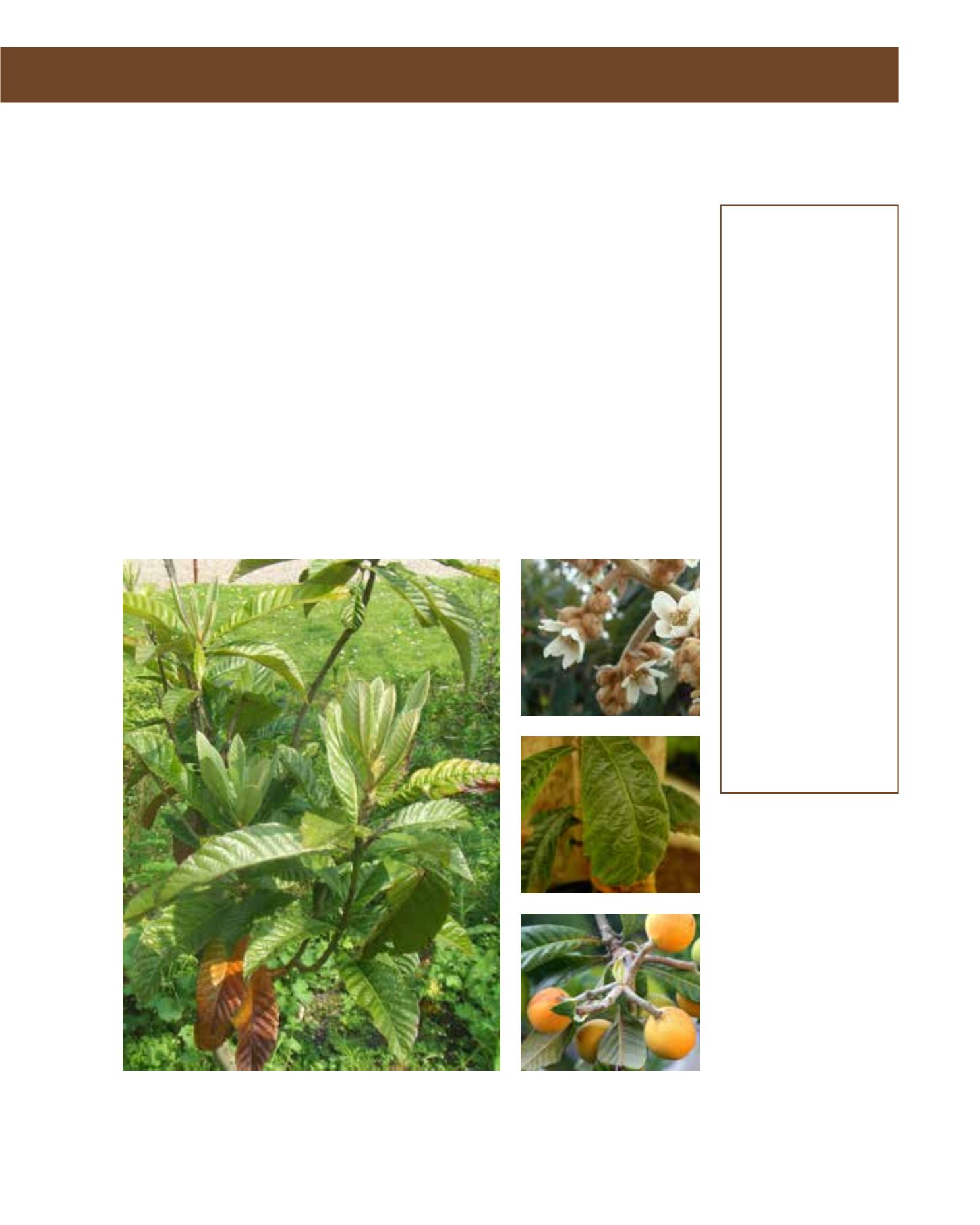

GENERAL
Origin
:
sub-Mediterranean,
Mediterranean,
sub-tropical
Vigour
:
normal growth
rate
Humidity
:
semi-humid, very
humid
Propagation :
sowing and
pricking out,
layer, cuttings
Maintenance :
moderate
CONDITIONS
Urban climate :
vulnerable
Dessication :
resistant
Stagnant water :
vulnerable
Irrigation
:
medium
Salinity/ppm :
moderate (1500
ppm)
Hardiness
:
-9°C
SHAPE
Type
:
tree, shrub
Height
:
3 m-8 m
Spread
:
4 m-10 m
Foliage
:
evergreen
FLOWER
Colour
:
white
Size
:
10 cm
Period
:
September -
December
FRUIT
Type of fruit :
pome
Fruit size
:
3 cm - 4 cm
Toxicity
:
produced for
food, edible, fruit
Eriobotrya, commonly known as Loquat, is an evergreen shrub or small tree with a compact,
rounded structure that reaches a height of between 3 and 8 metres. It is indigenous to Central
China and South Japan, and seen in Arriyadh only in sheltered gardens and farms. The bark and
young branches are woolly and the large, deep-veined and saw-toothed leaves are glossy, dark
green on top and rusty underneath; they are elliptically shaped and up to 30 cm long. Clusters
of small, white, rose-like flowers appear at the branch endings in panicles in autumn and winter,
exuding a scent of vanilla. The small, edible, round fruit is deep-yellow in colour, and sweet in
flavour. The large seed can be squeezed out of the fleshy fruit. Loquat is deep rooting and likes
well-drained, but moist soil, and is nevertheless quite drought-tolerant. Growth rate and salt to-
lerance are moderate. E. japonica can be propagated by seed or cuttings. It is an appealing, small
tree for a protected, private garden or patio or a large container, because of its attractive foliage,
flowers and fruit. Best planted in wind-sheltered locations, Loquat will make an excellent speci-
men, dominant or edging plant in a park, too, if sheltered. It requires a rich dressing of fertiliser
in spring, and is susceptible to fireblight, root fungus and mealybugs. Maintenance is moderate
and pruning is required from time to time to improve the tree’s shape and to thin out the interior
branches, to allow sunlight to reach inside. In this way, fruit-bearing will be increased.
136
Eriobotrya japonica,
Rosaceae
Loquat
















